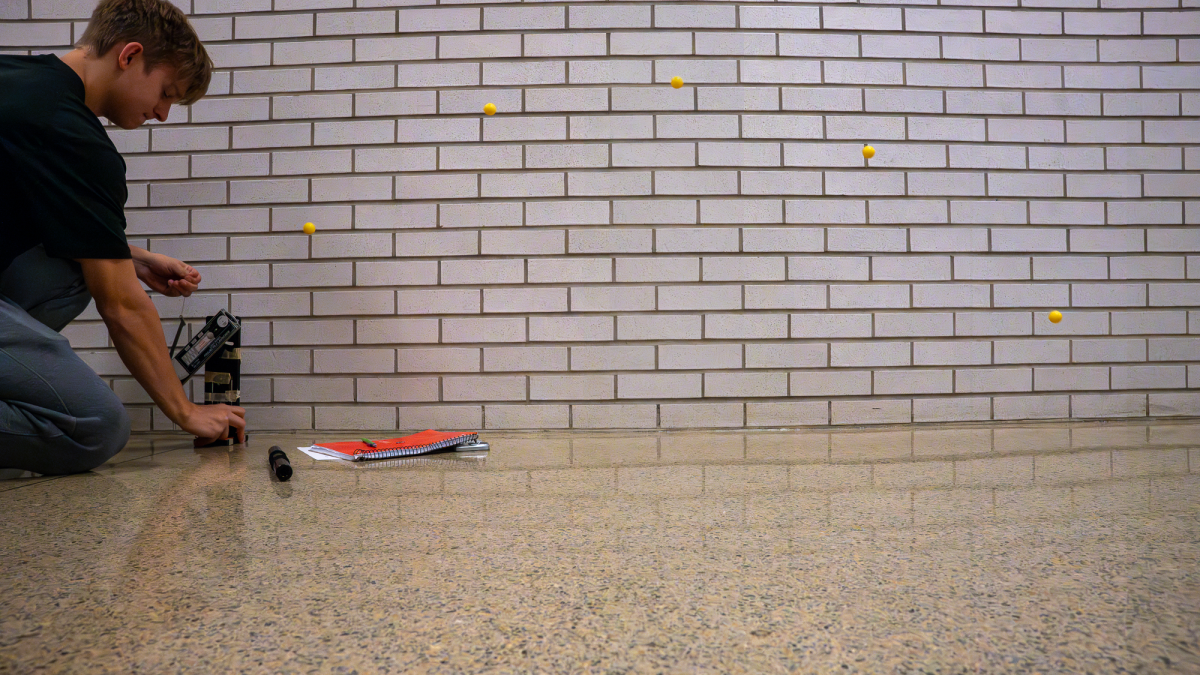In Honors Physics, students recently performed an experiment to calculate projectile motion. "Projectile motion is how we describe things that are flying through the air in physics," NASH Physics teacher and Science Department Chair Mr. Omasits said. "The calculations can seem very complicated, but it turns out that once you understand how it works, projectile motion is a really simple concept if you break it down into its separate parts. This lab is a great experience for students to do some simple real-world calculations to prove that what we do in class and for homework really works. We have to make a lot of assumptions in physics, especially early on, such as ignoring air resistance in order to have our calculations work out and not become too complicated too quickly. With something simple like a spring-loaded launcher and plastic ball, students can measure some known information and then use that information to calculate where the ball should land when given a new, random angle to launch from. Their job is to place a little green army man where their calculated ‘target’ would be located. Most of the time they are either able to hit the army man on their first shot, or get very close. It’s a nice way to verify in a few class periods that what we’re doing on paper does actually work in the real world using a very simple experiment."
Science of Motion
Honors Physics students recently conducted a hallway experiment to deepen their understanding of projectile motion.
November 7, 2024

